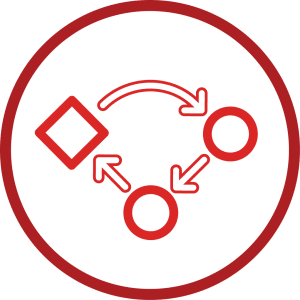 If you sell B2B products through partner channels, a sales playbook just might become the most effective marketing asset in your arsenal. That’s because a good playbook gets partners talking about your products directly with their customers. Some playbooks are massive tomes focused on product details and corresponding messaging. Chances are, your partners will find such a playbook to be TMI. Instead, take the playbook sports metaphor to heart and wrap your core message around a repeatable “play” that a salesperson can run easily. They just pick the play that most closely matches the customer’s use case, industry, or persona—and let that guide the conversation. Every effective playbook is different, and your product, channel characteristics, and target customers should guide the content. But we’ve found that the most effective partner playbooks share four characteristics. A partner playbook should:
If you sell B2B products through partner channels, a sales playbook just might become the most effective marketing asset in your arsenal. That’s because a good playbook gets partners talking about your products directly with their customers. Some playbooks are massive tomes focused on product details and corresponding messaging. Chances are, your partners will find such a playbook to be TMI. Instead, take the playbook sports metaphor to heart and wrap your core message around a repeatable “play” that a salesperson can run easily. They just pick the play that most closely matches the customer’s use case, industry, or persona—and let that guide the conversation. Every effective playbook is different, and your product, channel characteristics, and target customers should guide the content. But we’ve found that the most effective partner playbooks share four characteristics. A partner playbook should:
- Go down easy. Make your playbook as straightforward and usable as possible. A salesperson should be able to find and review the right play for a specific customer in a flash. Pare down your message to what’s relevant to partners. Ideally, you create playbooks targeted at specific types of partners. That way your partners in one industry don’t have to wade through messaging that’s irrelevant to them. An interactive PDF may be the best possible form for a partner playbook because the internal links within the PDF help the salesperson navigate to the right information quickly.
- Follow a predictable formula. A repeatable play—whether in sales or football—provides consistent guidance. Break down plays into pieces that suit your products and a typical sales situation. Depending on your product, every play might include a use case, probing questions, messages targeted at specific personas, and clear next steps.
- Address real-world objections. Help partner salespeople keep the conversation going by preparing them to handle objections. Learn more about common real-world objections and misconceptions about your products by talking to your own salespeople. They know how to address the little digs that competitors might say about your products, but those same—easily addressed—objections might leave partners feeling vulnerable.
- Explain how you can help. Clearly list all the resources you’ve assembled to help partners. Be sure to highlight any programs you have to help them close the deal, such as proof-of-concept guidance, free trials, and sales assistance.
Sound complicated? It’s not. Give us a call. We’d be happy to talk to you about creating a sales playbook that your partners will rave about—and use to drive sales for both companies. Stay tuned for more about the five most useful partner marketing assets as our Partner Marketing Blog Series continues. Next up: partner-facing PowerPoint pitch decks


